
|   |

|   |
Mulam 2022 - Addressing various concerns that surface between a Guru and Shishya - Ashwini Naik e-mail: ashwini.naik.gad@gmail.com Photos courtesy: Padmanabhan and Shilpa Joseph August 7, 2022 The 7th edition of Mulam - The Roots, curated by Vyjayanthi Kashi, was back this year at A.D.A Rangamandira, Bangalore on 15th July 2022. The highlight of Mulam every year has been thought-provoking panel discussions focusing on the different aspects of Guru-Shishya Parampara, followed by wonderful performances from renowned Gurus and their shishyas. Supported by Indian Council for Cultural Relations, Bangalore, this year's event focussed on addressing various concerns that surface between a Guru and Shishya, from both their perspectives. 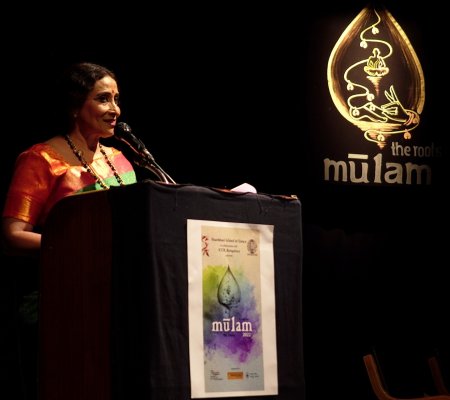 Vyjayanthi Kashi The event was kicked off traditionally with an invocation praising the Gurus, written, composed and beautifully sung by Dr. Ramya Suraj. Vyjayanthi Kashi then welcomed the audience to this edition of Mulam expressing her thoughts on the importance of Guru-Shishya Parampara and the need behind reaching into the roots of this Parampara in today's world to keep this beautiful Parampara alive. The evening event was inaugurated by Sunil Kumar Singh, Senior Regional Director and Zonal Head ICCR, Sri Iyengar, Regional Director ICCR Bangalore and all the gathered Gurus and dignitaries by lighting the traditional lamp. The panel discussion immediately followed the lighting of lamp. To represent the community of Gurus, the panel included Guru Shama Bhate, Aruna Mohanty and Sridevi Ajai Tirumalai. On the other hand, representing the community of shishyas were dancers Mithun Shyam, Sarita Mishra and Dr. Vasanth Kiran. Moderating the panel was Minal Prabhu, Bharatanatyam guru and founder of Mudrika Foundation for Indian Performing Arts, teacher at Natya Institute of Kathak and Attakkalari Center. Minal Prabhu kicked off the discussion by inviting all to bow down to the Trinity and initiating the audience into an understanding of what Guru means. She brought to fore that the Guru Shishya Parampara has not been new to our culture, and even Lord Vishnu was compelled to have Gurus when he descended to earth in his human avataars. It is important for a shishya to bow down to his Guru, accept him as the guide. Whereas on the other hand, it's important for a Guru also to have love for his shishya so that even if he chastises his shishya, the shishya understands that it comes from a goodwill to help him grow. As much as it's important for a shishya to have a good Guru, it's important for a Guru to have a good shishya. 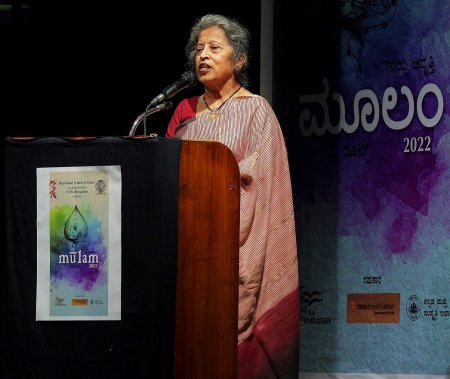 Shama Bhate The stage was then taken up by Guru Shama Bhate, eminent Kathak dancer, choreographer, teacher, and director of Nadroop, a dance institute imparting Kathak to the new generation. As a product of Guru Shishya Parampara under Guru Rohini Bhate and Suresh Talwalkar, to her the place of Guru is very important. Her Gurus themselves had left no stone unturned to pass on the knowledge. But in the changing times, generation, technology, the question remains if Guru Shishya Parampara can remain same. The first point in the changing scenario she put was the focus on group performances than on solos, which are causing talented artistes to become complacent as they are not challenged to express more. She felt the need to have more support for solo performances. Her second point was that today's dancers do not get the chance to work on their ideas and get the art enriched. They are forced to work within the frame of the group choreographer or the Guru's ideas. The third aspect was the focus on pedagogy or syllabus and exams, and hence the compulsion to follow the same, and not focus on the individual strengths of the students. This provides advantage to ordinary students to move faster in learning than they should, whereas the talented ones lose the benefit of focused learning from the Guru. This causes a conflict for a Guru who would train in a Guru Shishya Parampara. She strongly felt the need for the Guru Shishya Parampara to remain intact and strengthen. 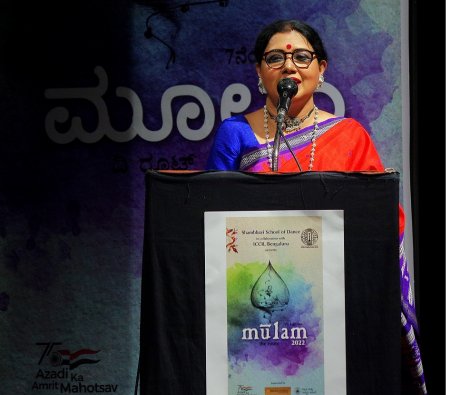 Aruna Mohanty Odissi dancer, Secretary of Odisha Dance Academy, Aruna Mohanty was next to share her views. Bowing down to the god in all of us, she confessed that though those who are learning from her call her a Guru, she believes she is still a shishya. In the earlier days, learning under a Guru meant total surrender to the Guru. But today, it's a question of how we can make the relation relevant. She learnt a lot from her Guru Gangadhar Pradhan, who went on to establish himself and the Odisha Dance Academy, though beginning from very humble origins. The first thing she learnt and follows is, don't take responsibility of a student's growth, but make them responsible for themselves and hence avoid making them take the support for granted. Staying and learning together with other students at Odisha Dance Academy, she learnt that if someone is good, give them whatever you know, and they will take the art to higher destinations. It's the art you are committed to. In today's world, teach the students to experiment, ask questions to the answers, make them think and introspect. She beautifully brought out the difference between a Guru and teacher highlighting that while a Guru instils trust and humility, the teacher instils obedience. A Guru prepares us for an inner journey whereas a teacher prepares us for an outer journey. A Guru shows the road to freedom, whereas a teacher shows the road to success. A Guru constructs, a teacher instructs, a Guru finds the special thing in you, accepts you as shishya and nurtures, whereas a teacher treats all students equally. When a Guru finishes life celebrates and when a teacher finishes, you celebrate. Answering some of the concerns on the solo and group forms raised, Aruna Mohanty opined that since it is challenging to provide opportunities to all students in solos, the groups are choreographed in a way that all seniors have something important in it. It makes them understand that they have something important to give back to the juniors and in the process, they learn many things. But for all this we need to create platforms and the funding is the challenge. Dance cannot be free, and it must be nurtured. She left the audience with a question to ponder on how we can bring young entrepreneurs to understand the need to support art and help it grow. 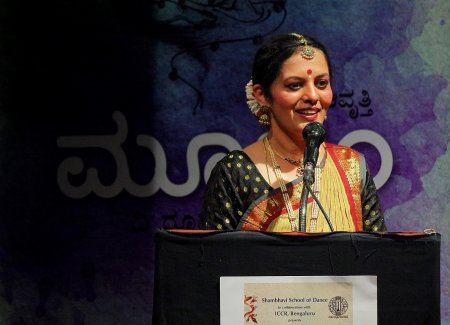 Sridevi Tirumalai US based Bharatanatyam dancer, teacher and founder of Natyamani School of Dance, Sridevi Ajai Tirumalai was the next to share her experience of her being a Guru, and the learnings she took from her Guru Padmini Ramachandran. Moving from Bangalore to US, it wasn't easy for her to establish an institution to share what she learnt and propagate the knowledge. More difficult was the cultural differences the children faced. Language was understood by them but they couldn't speak. It was important to make them understand that it was OK to be different and learn different. But Sridevi emphatically suggested that it's important that children are spoken to and taught their mother tongue and their culture, Itihasas, Puranas. Also, she learnt to adapt and give creative room to the students. It's important that the art is not only for talented students but for all, and the teaching has to be adapted to the strengths of each child. It's also important to have more interactive classroom, to let children ask and learn. According to Sridevi, time is very precious, and it's important to children as it is to us. Hence, it's important to value everyone's time and not make anyone wait. Emphasizing on the Guru Shishya Parampara, she opined that it's important to build a community of artists and Guru Shishya Parampara definitely helps students become good humans. Once the Gurus had spoken of the concerns they see arising between Guru and shishya and how they handle the same, it was now the turn to highlight shishya's viewpoint. 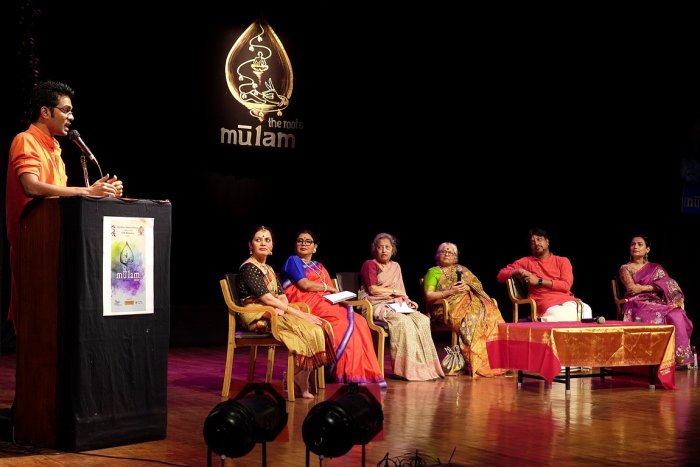 Panel The first one to speak on behalf of shishyas was Bharatanatyam and Kuchipudi dancer, choreographer, teacher, Dr. Vasanth Kiran. Looking at today's times when students have moved on to a very open questioning mode, Vasanth had the following to share. He opined that a student doesn't become a shishya soon after joining or in a year. He must be a student, move to becoming a mentee, a protégé before becoming a shishya, and the Guru has to accept him as one.The next comes with converting the passion for dance to profession, and this involves going through training, exams, degrees in today's world, and the shishya needs to be prepared for the same.The problem of going with multiple Gurus is another issue plaguing today. Today's generation is OK with replacing Youtube for real Gurus, as everything is available on the internet. And it turns out that every item is learnt with a different Guru's video. Innovation, creativity are needs of today's atmosphere and hence the shishya takes lot of freedom with the Guru's choreographies. A shishya need to be given freedom only after he has learnt the boundaries. Opportunities are rare today with a maximum of 5 minutes slots, thus restricting shishyas in finding right platforms. Shishyas becoming more famous than Gurus with the internet may not be very acceptable, resulting in also jumping across Gurus and the boundaries. But it is very important to have one Guru. You may learn from multiple teachers in workshops, but always come back to that one Guru. And as Guru, allow the shishya to learn across, make shishya see what it is to turn dance into a profession and equip them to make money from dance. In today's world, be a friend to the shishya. A shishya always is under a Guru and cannot overtake a Guru. At this Minal Prabhu had to say that art is one profession where the Guru will always be proud of shishya taking over, because the shishya's success always carries the Guru's name. Sarita Mishra, Odissi dancer and creative director of Adyasha School of Odissi Dance, spoke next on the concerns that create distance between a Guru and shishya. Her first thought was today, time is a major constraint. Everyone has lot of commitments in their family or profession, and this leads to lack of time for students to spend with Guru and learn from their talks, their ideas and miss on important learning. The teacher also then loses interest in the student as she feels the lack of commitment towards art or institution. The second aspect she felt that creates distance is money. Sometimes the student who doesn't have the means to pay or spend on gifts for teachers is side-lined despite being talented. This breaks the bond with their teachers. Humiliating students for their personal life or for who they are not can also be very detrimental to the relation. Still, there are many wonderful Gurus because of whom the Guru Shishya Parampara still lives on. It's important for Guru to set expectations right and keep talent ahead of other aspects and the rest will follow. This was followed by a crisp set of questions by Mithun Shyam, Bharatanatyam dancer, choreographer, and artistic director of Vaishnavi Natyashala, to the panel. The first aspect that Mithun brought up to the panel was, how you handle when you are a Guru as well as a parent. Will this give undue advantage to the child over the other students who travel long distances or invest lot of time to learn the art form. The second question running in shishya's minds is about institutionalization of dance and its impact on the acceptance of those who learnt under Guru Shishya Parampara, by the organizers. The third concern is how should Gurus let go of students to freelance with other Gurus. The fourth concern is about becoming a solo dancer with their own individuality when the most opportunities are in group performances, and how do Gurus help build this. The final question being, when is the shishya allowed to teach their own students. Guru Shama Bhate started with addressing some of the concerns raised. Focusing on the Guru being the parent, she felt that a Guru is also a human being with flaws. Not everyone would react the same to the students, but merit should be first focus. Given the institutionalization of dance, she has had her concerns, and tries not to strictly follow but teach by student's needs and hence demands more time from students. When the students must leave for following their profession or education, she expects that they keep a connect with someone senior to keep the roots. She also expressed that we need to also learn or rely on the younger generation with their skills. Aruna Mohanty opined that if a student is good, the Guru cannot keep them away from spotlight. But if the student who is a child of the Guru is talented, then it's not fair that the Guru deprives the student in fear of others talk of favouritism. Regarding the institutionalization, her opinion was that degrees may be a must today, but then when you go on stage it's not the degrees but the talent and art that matter. Her thought about giving freedom to students was that when it comes to abhinaya, it is better to give that freedom to experiment, but with technique based dances, it's better to stick to the framework. With respect to freelancing, her view is that it's a double edged sword. When you are a part of an institution's repertoire, you carry the brand of that institution and the Guru's efforts are behind it. But when someone else just uses your talent and learning to create their name, then it goes against the brand that was created. Concluding the panel discussion, Minal Prabhu summarized the challenges that we see today with time given to learning, or learning from YouTube, plagiarism associated with it. But it's important still to continue the Guru Shishya Parampara and encourage the students to come up with creative ideas, helping them build passion to profession. Not breaking the tradition of Mulam, the evening event then continued with mesmerizing performances by the eminent Gurus and their shishyas. Mulam 2022: Performances - Gayathri Iyer 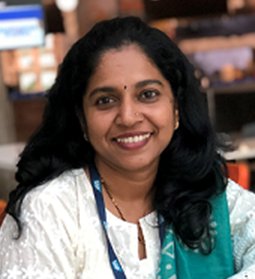 Ashwini Naik is a corporate leader, dance enthusiast and an amateur writer. Vice President in a multinational, Ashwini tries to intertwine her vocation and avocation by driving cultural initiatives in the corporate world. Having trained in Bharatanatyam and Kuchipudi, Ashwini shares her learnings in dance and language with her corporate friends. |